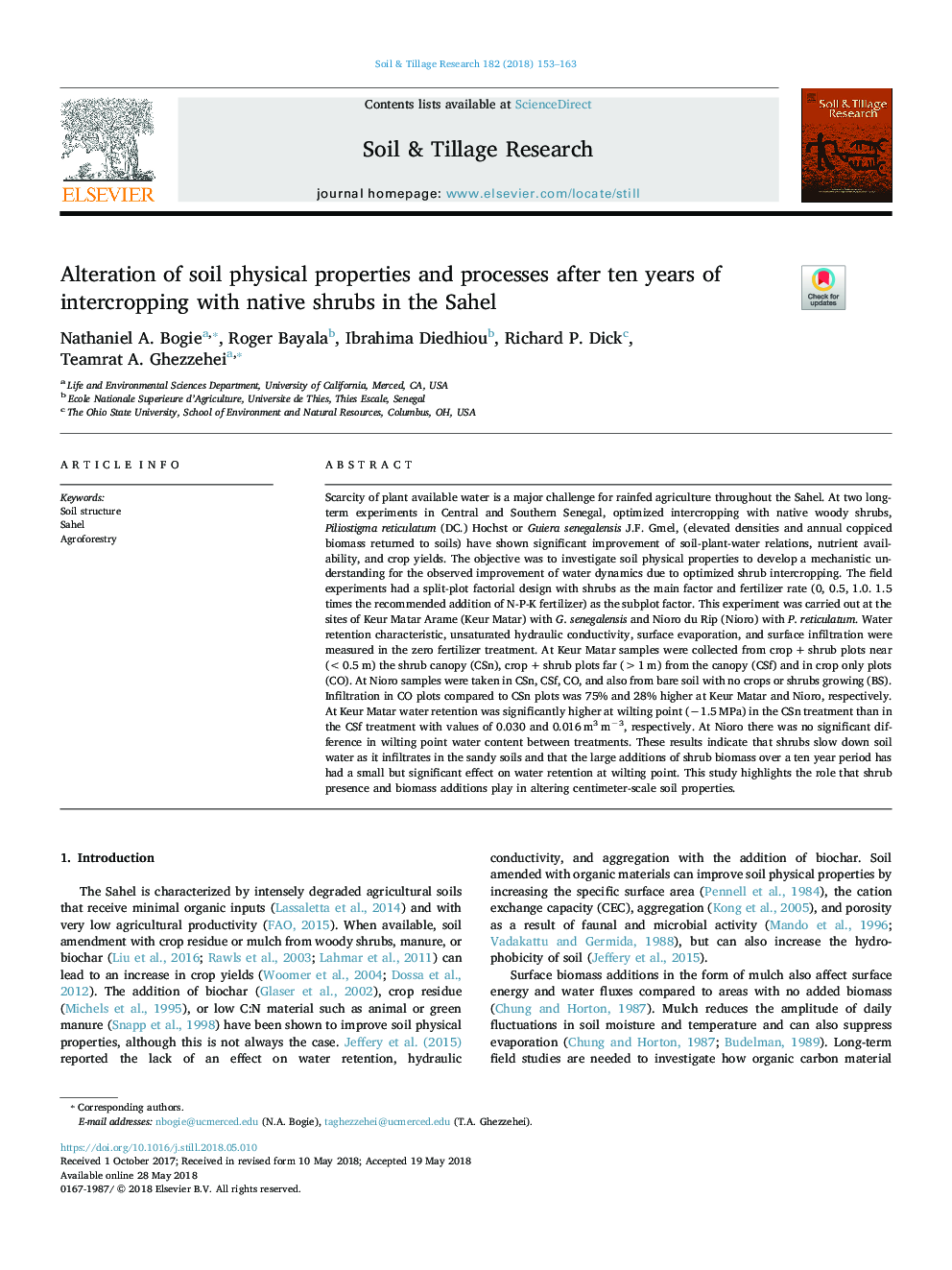| Article ID | Journal | Published Year | Pages | File Type |
|---|---|---|---|---|
| 6772991 | Soil and Tillage Research | 2018 | 11 Pages |
Abstract
Scarcity of plant available water is a major challenge for rainfed agriculture throughout the Sahel. At two long-term experiments in Central and Southern Senegal, optimized intercropping with native woody shrubs, Piliostigma reticulatum (DC.) Hochst or Guiera senegalensis J.F. Gmel, (elevated densities and annual coppiced biomass returned to soils) have shown significant improvement of soil-plant-water relations, nutrient availability, and crop yields. The objective was to investigate soil physical properties to develop a mechanistic understanding for the observed improvement of water dynamics due to optimized shrub intercropping. The field experiments had a split-plot factorial design with shrubs as the main factor and fertilizer rate (0, 0.5, 1.0. 1.5 times the recommended addition of N-P-K fertilizer) as the subplot factor. This experiment was carried out at the sites of Keur Matar Arame (Keur Matar) with G. senegalensis and Nioro du Rip (Nioro) with P. reticulatum. Water retention characteristic, unsaturated hydraulic conductivity, surface evaporation, and surface infiltration were measured in the zero fertilizer treatment. At Keur Matar samples were collected from cropâ¯+â¯shrub plots near (<0.5â¯m) the shrub canopy (CSn), cropâ¯+â¯shrub plots far (>1â¯m) from the canopy (CSf) and in crop only plots (CO). At Nioro samples were taken in CSn, CSf, CO, and also from bare soil with no crops or shrubs growing (BS). Infiltration in CO plots compared to CSn plots was 75% and 28% higher at Keur Matar and Nioro, respectively. At Keur Matar water retention was significantly higher at wilting point (â1.5â¯MPa) in the CSn treatment than in the CSf treatment with values of 0.030 and 0.016â¯m3â¯mâ3, respectively. At Nioro there was no significant difference in wilting point water content between treatments. These results indicate that shrubs slow down soil water as it infiltrates in the sandy soils and that the large additions of shrub biomass over a ten year period has had a small but significant effect on water retention at wilting point. This study highlights the role that shrub presence and biomass additions play in altering centimeter-scale soil properties.
Keywords
Related Topics
Physical Sciences and Engineering
Energy
Renewable Energy, Sustainability and the Environment
Authors
Nathaniel A. Bogie, Roger Bayala, Ibrahima Diedhiou, Richard P. Dick, Teamrat A. Ghezzehei,
